Defense Counsel Journal
New Federal Rule of Evidence Rule 702: A Circuit-by-Circuit Guide to Overruled "Wayward Caselaw"
Volume 91, No. 2
June 28, 2024
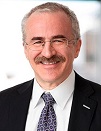
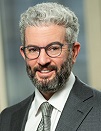
Eric Lasker litigates a wide variety of complex civil matters, with a current focus on toxic torts, environmental litigation, and pharmaceutical product liability. He has successfully represented his clients' interests as lead counsel in multidistrict, serial, and mass tort litigation, in jury trials and bench proceedings, and in oral argument in multiple federal courts of appeal and state supreme courts. Along with George Mason University law professor David Bernstein, Mr. Lasker authored “Defending Daubert: It’s Time to Amend Federal Rule of Evidence 702,”157 William & Mary L. Rev. 1 (2015).
which triggered the Advisory Committee on Evidence Rules review of the text of Rule 702. At the Committee’s invitation, Mr. Lasker participated in a 2018 roundtable discussion on a potential amendment to Rule 702, and he also testified before the Committee in 2022 in support of the amendment. Mr. Lasker is the founding Chair of the IADC’s Rule 702 Sustainability Committee.
Joshua Leader is a partner at Leader Berkon Colao & Silverstein LLP in New York City. He manages a diverse range of litigation in areas including complex commercial, securities, product liability, toxic tort, entertainment, employment, and intellectual property actions in both state and federal courts across the country. Josh approaches litigation from a holistic perspective, assisting clients in meeting their business goals, either through strategic litigation decisions or through litigation avoidance efforts. He is an active member of the IADC’s Toxic & Hazardous Substances Litigation and Rule 702 Sustainability Committees.
ON December 1, 2023, Federal Rule of Evidence 702 was amended for the first time in twenty-three years to address what the Advisory Committee on Evidence Rules (“Advisory Committee”) identified as a pervasive problem of “wayward caselaw” in which federal courts had been “far more lenient about admitting expert testimony than any reasonable reading of the Rule would allow.”2Daniel J. Capra, Reporter, Mem. To: Advisory Committee on Evidence Rules Re: Public comment suggesting an amendment to Rule 702, at 4 (Oct. 1, 2016) in Advisory Committee on Evidence Rules October Agenda Book, 262 (Oct. 21, 2016), available at https://www.uscourts.gov/sites/default/files/2016-10-evidence-agenda-book.pdf.
The language of Rule 702 now reads as follows (with changes in highlights and strikeouts):
A witness who is qualified as an expert by knowledge, skill, experience, training, or education may testify in the form of an opinion or otherwise if the proponent demonstrates to the court that it is more likely than not that:
a) the expert’s scientific, technical, or other specialized knowledge will help the trier of fact to understand the evidence or to determine a fact in issue;
b) the testimony is based on sufficient facts or data;
c) the testimony is the product of reliable principles and methods; and
d) the expert has reliably applied the expert’s opinion reflects a reliable application of the principles and methods to the facts of the case.
The amendments confirm three key elements of the Rule 702 admissibility standard that the Advisory Committee determined had been most frequently ignored in prior decisions. First, Rule 702 now makes clear that the court should not defer to the jury in factual determinations of whether the expert satisfies the admissibility criteria of the Rule. Second, the Rule explains that the court must find that the proponent of the expert testimony satisfies each of the four elements of Rule 702 by a preponderance of the evidence. Third, the Rule requires courts to go beyond the checkbox approach of simply confirming the existence of factual bases and an expert methodology to evaluate whether the expert’s opinion reflects a reliable application of the methodology to the facts. And by expressly focusing the court’s inquiry on the expert’s opinion, this amendment further establishes that the court’s gatekeeping responsibility is an ongoing one that continues through trial to guard against experts overstating the conclusions that can be reliably reached from their analyses.
As important as each of these amendments will be going forward, the new Rule 702 is equally important in what it says about the existing body of Rule 702 case law. Opponents of the amended Rule will no doubt seek solace in prior cases that take a more liberal view of the admissibility of expert testimony. But as Daubert itself explained in one of the remaining lasting legacies of that foundational opinion, “under the Federal Rules no common law of evidence remains.”3Daubert v. Merrell Dow Pharms, Inc., 509 U.S. 579, 588 (1993) (citation omitted).
It is the language of Rule 702, not case law, that governs. And any question of the continued significance of prior case law is laid to rest in the Advisory Committee Note and drafting history, which repeatedly call out this liberal-admissibility case law as wrongly decided.
The Advisory Committee was remarkably frank in its condemnation of prior case law. In its Advisory Committee Note, the Committee admonishes the “many courts [that] have held that the critical questions of sufficiency of an expert’s basis, and the application of the expert’s methodology, are questions of weight, not admissibility,” finding that “[t]hese rulings are an incorrect application of Rule 702 and 104(a).”4Advisory Comm. on Evidence Rules, Proposed Amendments to the Federal Rules of Evidence, Rule 702, advisory comm. Note 1.
The Note continues, “[t]he Committee concluded that emphasizing the preponderance standard in Rule 702 was made necessary by the Courts that have failed to apply correctly the reliability requirements of the rule.”5Id.
The Note explains “[t]he amendment clarifies that the preponderance standard applies to the three reliability-based requirements added in 2000 [when the Rule was previously amended] – requirements that many courts have incorrectly determined to be covered by the more permissive Rule 104(b) standard.”6Id.
And the Note specifically calls out courts that had abdicated their responsibility to rigorously review the expert’s application of their stated methodology to the facts, noting that “judicial gatekeeping is essential because just as jurors may be unable, due to a lack of specialized knowledge, to evaluate meaningfully the reliability of scientific and other methods underlying an expert’s opinion, jurors may also lack the specialized knowledge to determine whether the conclusions of an expert go beyond what the expert’s basis and methodology may reasonably support.”7Id.
The drafting history of the Committee’s deliberations are equally damning of prior case law. In his initial legal memorandum to the Advisory Committee assessing the need to amend Rule 702 in response to a 2015 law review article, the Reporter to the Advisory Committee, Professor Capra concluded that “courts have defied the Rule’s requirements,” that “wayward courts simply don’t follow the rule” and that, as a result, “Evidence Rules are being disregarded by courts.”8See supra note 2, at 262.
Following its own extensive review, the Advisory Committee reached the same conclusion, bemoaning the “pervasive problem” that in “a number of federal cases … judges did not apply the preponderance standard of admissibility to [Rule 702’s] requirement of sufficiency of basis and reliable application of principles and methods, instead holding that such issues were one for the jury.”9Advisory Comm. on Evidence Rules, Minutes of the Meeting of November 13, 2020, at 3 in Advisory Committee on Evidence Rules April Agenda Book, 17 (Apr. 30, 2021), available at https://www.uscourts.gov/sites/default/files/advisory_committee_on_evidence_rules – agenda_book_spring_2021.pdf.
In the Report of the Advisory Committee to the Committee on Rules of Practice & Procedure, Committee Chair Judge Schultz explained that “[t]he Committee has determined that in a fair number of cases, the courts have found expert testimony admissible even though the proponent has not satisfied the Rule 702(b) and (d) requirements by a preponderance of the evidence.”10Hon. Patrick J. Schultz, Report of the Advisory Committee on Evidence Rules, at 5 in Committee on Rules of Practice and Procedure January agenda book, 445 (Jan. 5, 2021), available at https://www.uscourts.gov/sites/default/files/2021-01_standing_agenda_book.pdf.
We are thus left, following the amendment to Rule 702, not simply with new Rule language to be applied going forward, but with a large body of case law that has now been emphatically rejected and overruled. This case law had previously guided, if not governed, lower court expert admissibility rulings. To help navigate through this debris field, the International Association of Defense Counsel’s Rule 702 Sustainability Committee has prepared the following Circuit-by-Circuit guide of wayward Rule 702 case law. This guide identifies key cases by judicial circuit and identifies the manner in which this prior precedent fails to meet the standards of Rule 702.
While the product of extensive work and analysis, this guide is not exhaustive – the decades of judicial defiance of the Rule’s admissibility requirement would make any such effort unattainable. And of course, practitioners using this guide must use their own judgment in explaining to courts why the identified decisions should no longer be followed. But – we hope – the guide provides a quick reference that will help relegate this wayward caselaw to the dustbin of legal history and clear the field for the proper application of Rule 702 moving forward.
TABLE OF CONTENTS
THE FIRST CIRCUIT
by Marie E. Chafe, Emily J. Slaman, and Daniel Walsh-Rogalski



THE SECOND CIRCUIT
by Joshua K. Leader, Melanie Brother, Ryan Hersh, and Patrick Fitzmaurice

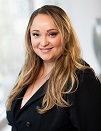
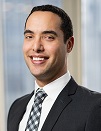

THE THIRD CIRCUIT
by Peter J. Pizzi and Christine P. Clark
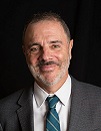
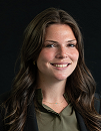
THE FOURTH CIRCUIT
by Amy E. Askew and Louis P. Malick
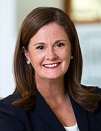
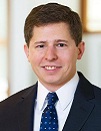
THE FIFTH CIRCUIT
by Jim Shelson, Nash Gilmore, and Garrett Anderson
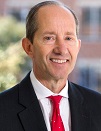
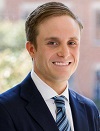
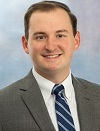
THE SIXTH CIRCUIT
by David T. Schaefer, M. Trent Spurlock, and Jasmine R. Chenault-Diehlmann
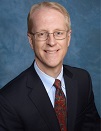
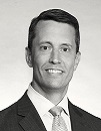
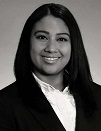
THE SEVENTH CIRCUIT
by William B. Larson, Jr. and Wade A. Bredin

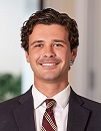
THE EIGHTH CIRCUIT
by Thomas Gaillard, III and Alex Gressett

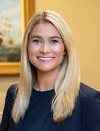
THE NINTH CIRCUIT
by Mark Behrens and Andrew Trask
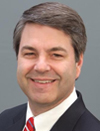
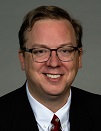
THE TENTH CIRCUIT
by Matthew Cairns and Katherine Kazarian
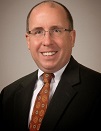
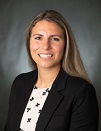
THE ELEVENTH CIRCUIT
by Susan J. Cole and Loren Y. Yudovich
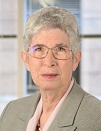
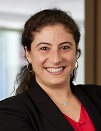
THE DISTRICT OF COLUMBIA CIRCUIT
by Raymond G. Mullady, Jr.
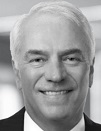
THE FEDERAL CIRCUIT
by James L. McCrystal, Jr.
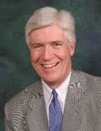
View Article
Back